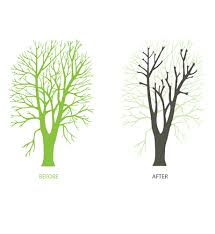Tree Pollarding is a technique used in the Tree Surgery industry to achieve a heavy reduction of a Tree.

What types of Trees can be Pollarded?
Tree Pollarding is a great technique to use if you require your tree to be reduced heavily. Although this is very appealing to many customers who may have a tree close to their house or other building, there are only certain trees that can withstand such drastic tree surgery methods such as pollarding.
Fast growing soft wood trees such as, Willow, Poplar, Ash and Horse Chestnut are commonly pollarded. Whereas slow growing hard wood trees such as, Oak, Beech and Yew cannot withstand heavy reductions. However, not all soft wood fast growing trees can reproduce growth and maintain health after being pollarded, so it is vital that you seek advice from a local professional Tree Surgeon or Tree surgery company before work commences on your tree.
How can Pollarding benefit me and my Tree?
Tree Pollarding changes the appearance of a tree drastically when the work is completed but if this method of tree surgery is used on the correct species for this technique, the tree will thrive in the following season and produce new healthy growth.
The results from Tree Pollarding can benefit both you, the customer and the tree itself. Pollarding is used by many councils to maintain street trees to a certain size and shape to suit the surroundings of the tree. Large trees situated in back gardens of houses can become too overwhelming especially with fast growing trees. This would be one situation when Sussex Tree Surgery would suggest Pollarding, taking into account the species of tree. Pollarding of a Tree is then used most commonly to eliminate the danger of having Trees that are too large for its surroundings, and to protect the tree from natural damage that may occur through wind resistance caused by a large tree crown.
Helping your Tree recover from damage or bad health
Tree Pollarding is used very commonly in tree surgery to help a tree recover and produce new growth. This may be necessary after your tree has been damaged such as sever broken branches, or if your tree is in an unhealthy state. Many unhealthy trees develop 'die back' on the ends of branches where growth would usually form causing dead wood. Pollarding the crown removes any dead wood or unhealthy branches, allowing new growth to form in the areas where cuts were made to remove effected branches.
Sussex Tree Surgery will be happy to inspect any tree you are concerned about or answer any questions you may have.



